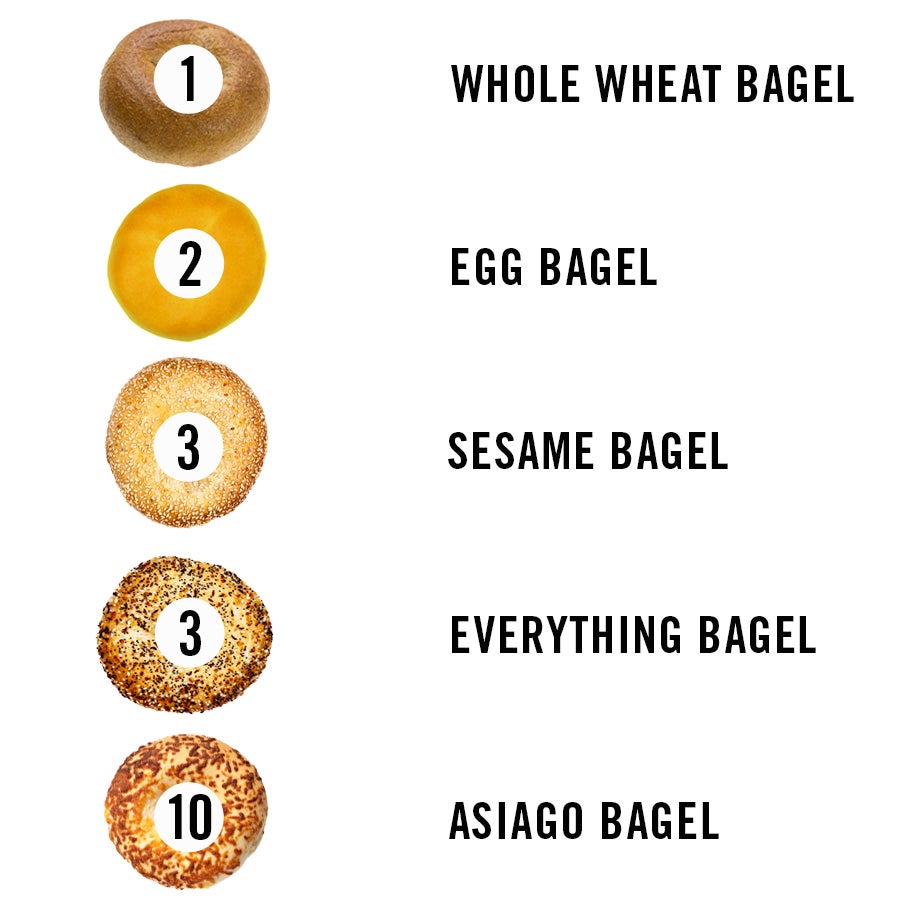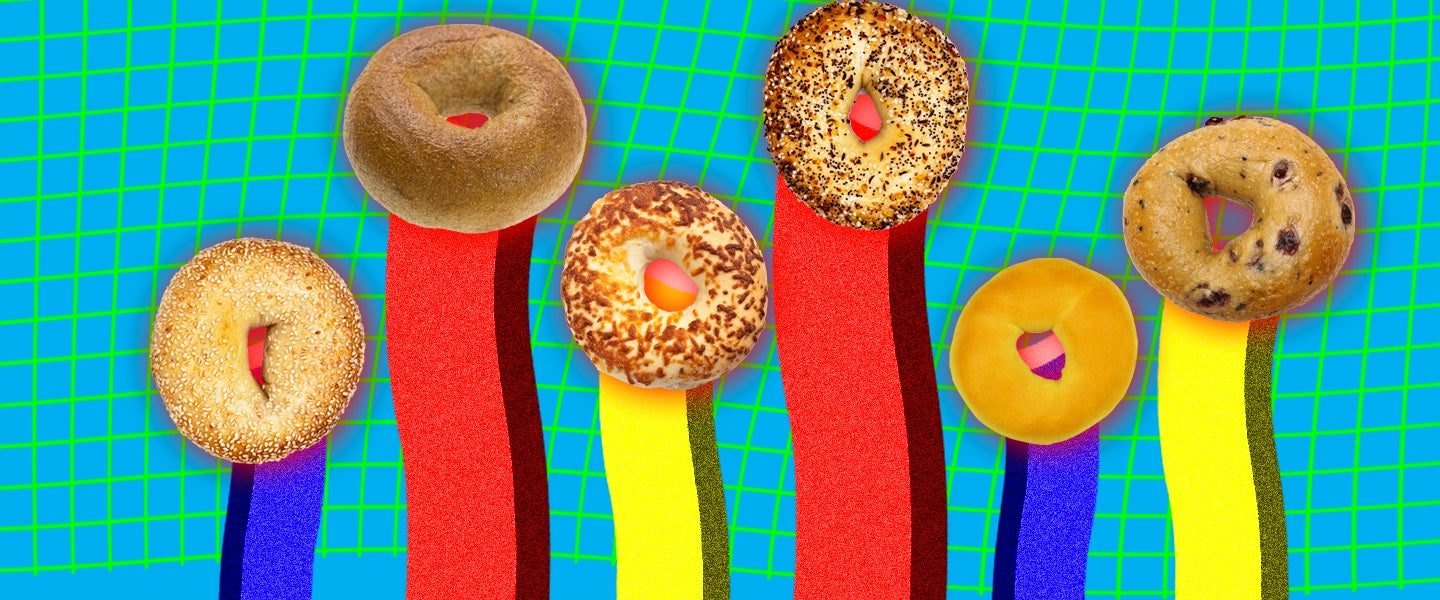Updated 6/14/22
I love a good bagel, but no other food-ordering experience rouses a sense of undecided hysteria quite like choosing which one I want cradling my dollop of cream cheese. The options are endless: I could go with something savory, like an onion bagel. Or maybe something sweet, like a blueberry one. Then again, perhaps a plain bagel would help the cream cheese stand out. Ooh, look at that one with even more cheese on top.
Yeah, if you care about your sanity, I recommend never taking me to a bagel shop. But for now, since the people in line behind me are on the verge of bashing me over the head with a sack of week-old bagels, I asked Dana Hunnes, senior dietitian at the Ronald Reagan UCLA Medical Center, to help me decide what I want by ranking an assortment of bagels by how unhealthy they are — from unhealthy to seriously unhealthy.
And sadly, as I just suggested, yes, bagels are inherently not so healthy. “All of these bagels use processed white flour, which is one of the ‘white foods’ I recommend avoiding,” explains nutritionist David Friedman, author of Food Sanity: How to Eat in a World of Fads and Fiction. What he means is, because most bagels are almost entirely white flour, which has virtually zero nutritional benefits, they mostly just provide empty calories, fattening you up without giving your body anything nice.
Another thing to consider before jumping into our ranking is the impact of whatever you choose to top your bagel with. “Avocado, hummus and peanut butter would be the best,” Hunnes says. All of these options provide healthy fats that are good for your heart, as well as plant-based proteins, turning your otherwise mediocre bagel into a more balanced meal. “Cream cheese, lox and butter [sorry, Brian] are among the worst toppings because of the animal protein and casein [a protein found in dairy and a possible tumor promoter]. A study came from Loma Linda the other day supporting what I already knew to be true: That dairy products, even small amounts, significantly increase your risk of developing breast cancer — and men can get breast cancer, too.” Still, lox is a better choice than cream cheese and butter, because it boasts omega-3 fatty acids (which prevent heart disease), B vitamins and essential minerals.
Now, back to the bagels and our ranking…

1) Whole-Wheat Bagels: Whole-wheat bagels are the healthiest choice, says Hunnes, because they provide a substantial amount of fiber (which helps keep your digestive system healthy), protein, vitamins, minerals and a variety of phytochemicals that improve digestion, reduce inflammation and lower cholesterol. More specifically, whole-wheat bagels contain lactic acid, which promotes the growth of “good bacteria” in the intestines.
Then again, if you want all of these benefits, you need the resolve to order a whole-wheat bagel when there are so many other, more appealing options, which… Godspeed to you.
2) Egg Bagels: Despite eggs having a questionably healthy reputation, egg bagels still earn second place on our ranking, because the presence of eggs makes the bagel a more balanced meal. Because eggs are good sources of protein and iron, egg bagels have about twice the amount of protein and iron when compared to plain bagels — and some additional vitamins, to boot. Nice job, egg bagels.
3) Onion, Poppy Seed, Sesame and Everything Bagels (tied): Hunnes says these are “all on par with each other,” because the “differences are fairly mild.” In other words, while onions boast some healthy antioxidants, for instance, or while poppy seeds deliver some healthy plant compounds, saying that the small amounts commonly found atop bagels have virtually any nutritional impact would be an exaggeration. In fact, as this Healthline article on sesame seeds explains, “You may need to eat significant amounts — a small handful per day — to gain health benefits.” And even if your bagel was loaded with sesame seeds, eating a bagel a day is a bad idea.
7) Plain Bagels: Honestly, Hunnes says, nutritionally speaking, plain bagels are incredibly close to onion, poppy seed, sesame and everything bagels. But since we could all use a little optimism in this doomed world, hey, even a couple poppy seeds are better than none, right?
8) Cinnamon Raisin and Blueberry Bagels: Getting some fruit in your bagel might seem like a good idea, but as Hunnes explains, fruity bagels like these are often pumped with added sugar to provide an extra kick of sweetness. And as we already know, sugar is awful for you, which negates any goodness that the fruit would otherwise provide. Again, these are not healthy bagels.
10) Asiago Bagels: These are the bagels with crusted cheese on top, which, as Hunnes explains, “are higher in calories, saturated fat [which is believed to be bad for your cardiovascular health], sodium and my favorite thing to talk about, casein.” She adds, “Keep in mind, too, that with the sizes of bagels these days being four ounces, we’re looking at between 300 and 450 calories just for the bagel alone.”
Today is a sad day.

